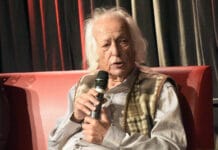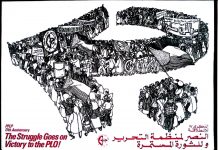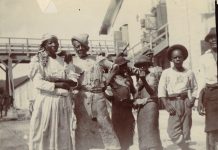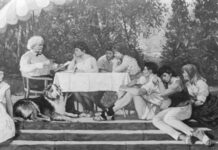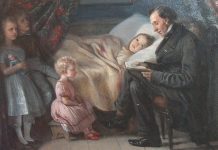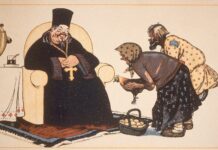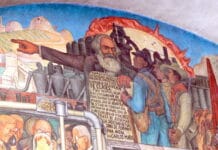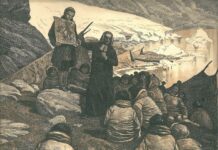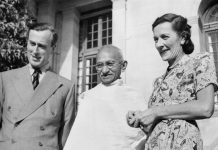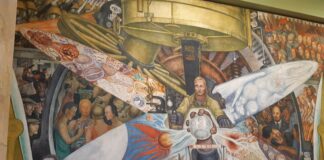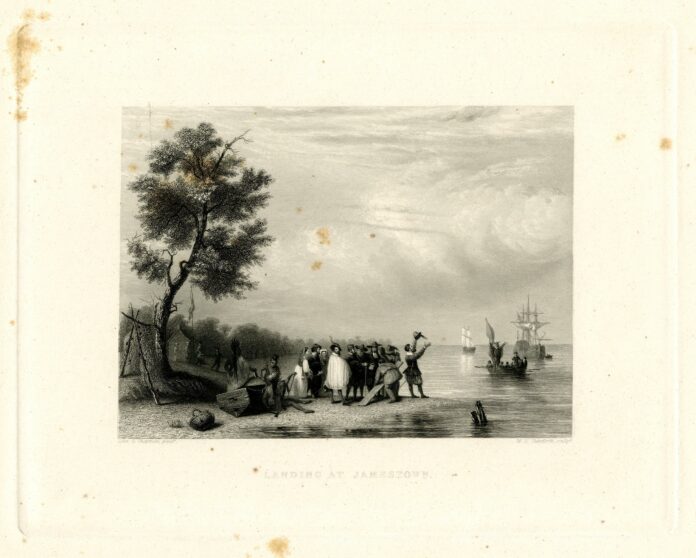
Socialistisk Biblioteks Tidslinje med links til begivenheder og personer i 1619.
Se også Index over personer, organisationer/partier og værker (som bøger, malerier, mm.), steder, begivenheder, mv., der er omtalt på hele Tidslinjen, titler og indhold på emnelisterne osv.
August 1619
August 1619: de første afrikanske slavegjorte ankommer til Jamestown, Virginia i det engelske Amerika. Direkte fra Afrika, og ikke som troet førhen, fra De Vestindiske Øer.
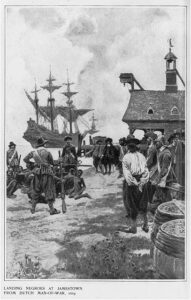
Link:
The 1619 Project (Wikipedia.org)
History of slavery in Virginia (Wikipedia.org)
Project 1619 (site). “There is an ongoing discussion in Virginia as to whether the first Africans who were brought here in 1619 were slaves or indentured.”
This day in history: August 20, 1619: “First enslaved Africans arrive in Jamestown, setting the stage for slavery in North America.” (History.com).
The fallacy of 1619: Rethinking the history of Africans in early America. By Michael Guasco (Black Perspectives, September 4, 2017). “There are important historical correctives to the myth of 1619 that can help us ask better questions about the past.”
Virginia’s first Africans in 1619 (US Slave, Blog, February 27, 2012). “Now, new scholarship and transatlantic detective work have solved the puzzle of who they were and where their forced journey across the Atlantic Ocean began.”
Se også:
The 1619 Project (The New York Times Magazine) + The 1619 Project (Wikipedia.org). “… a program organized by The New York Times in 2019 with the goal of re-examining the legacy of slavery in the United States.”
See the full issue of New York Times (pdf) (August 18, 2019, 100 p.; online at Pulitzercenter.org) + Why we published the 1619 Project. By Jake Silverstein (The New York Times Magazine, December 20, 2019) + 1619: audio series (September-October 2019).
See critique/debate:
The New York Times’ 1619 Project and the Racialist Falsification of History: A significant political and intellectual event. By James McDonald (World Socialist Web Site, 9 April 2021). Review of David North and Thomas Mackaman’s book (Mehring Books, 2021, 339 p.). “The book is a powerful collection of essays, lectures, polemics, and articles, as well as eight interviews with world-renowned scholars of American history. See also the book’s Introduction (Ibid., 4 December 2020).
The New York Times’ 1619 Project (World Socialist Web Site). “[We have] published detailed refutations of the numerous falsifications contained in the Times project, and interviewed leading historians of the United States.”
- The New York Times’s 1619 Project: A racialist falsification of American and world history. By Niles Niemuth, Tom Mackaman and David North (World Socialist Web Site, 6 September 2019). “The 1619 Project … presents and interprets American history entirely through the prism of race and racial conflict.”
- Letter to the Editor: Historians critique The 1619 Project, and we respond (New York Times Magazine, December 20, 2019)
- The fight over the 1619 Project is not about the facts. By Adam Serwer (The Atlantic, 23 December 2019)
- The 1619 Project debate: a bibliography. By Philip W. Magness (American Institute for Economic Researh, January 3, 2020)
- A matter of facts. By Sean Wilentz (The Atlantic, January 22, 2020)
- Project 1619 and its detractors. By Louis Proyect (CounterPunch, January 10, 2020).
- From the editor’s desk: 1619 and all that. By Alex Lichtenstein (The American Historical Review, 23 January 2020)
-
Twelve scholars critique the 1619 Project and the New York Times Magazine editor responds (History News Network, 26 January 2020)
- My response to Alex Lichtenstein regarding the 1619 Project. By Victoria Bynum
(Renegade South, 30 January 2020) -
I helped fact-check the 1619 Project: The Times ignored me. By Leslie M. Harris (Politico, 6 March 2020)
- An update to The 1619 Project. By
- The New York Times’ Jake Silverstein concocts “a new origin story” for the 1619 Project. By Tom Mackaman (World Socialist Web Site, 24 November 2021)
- The New York Times 1619 Project: A New Origin Story: History as the emanation of race. By Tom Mackaman (World Socialist Web Site, 20 February 2022. Review of Nikole Hannah-Jones’ (eds.) book (One World, 2021, 624 p.)
- What the 1610 Project got wrong. By James Oakes (Catalyst, Vol.5, No.3, Fall 2021). Also online with the title: How the 1619 Project distorted history (Jacobin, December 27, 2023)
-
The 1619 Project documentary series takes aim at the working class. By Tom Mackaman (World Socialist Web Site, 12 February 2023)
See also:
Bookwatch: Fighting to unite Black and White. By Lee Sustar (International Socialism, Issue 71, Summer 1996, p. 155-165). “… a number of books written over decades and from a variety of political viewpoints do enable us to trace the tradition of black and white unity.”
Se også på Socialistisk Bibliotek:
- Linksamlingen: Slaveri/Slavery
- Tidslinjen 3. september 1783 om Uafhængighedskrigen
- Tidslinjen: 25. marts 1807, om det britiske forbud mod slavehandel
- Linkboxen Den amerikanske borgerkrig og Abraham Lincoln


